Now that we’ve moved to a higher altitude, I think about sunscreen year-round, but particularly in the summer when we are spending more time outside and wearing shorts and t-shirts. Additionally, I’ve started to have an internal debate about my use of sunscreen, because while I use it every day to protect my skin from aging, I’m starting to think that a little bit of tanning is Ok and even good for my health by naturally increasing my Vitamin D levels. Do you know about the negative health concerns associated with Vitamin D deficiency?
The other concern I have while using sunscreen are the chemicals found in many over-the-counter products, especially since I’m still nursing little Luc. The problem is that a number of the chemicals in certain sunscreens can enter your bloodstream and some act as or disrupt the natural hormones in our body. The Environmental Working Group provides a detailed overview of both the chemicals and minerals used in sunscreens and the toxicity concerns associated with each. So, what’s a person to do? Read on to find out a little bit more about sunscreens and my current solution…
Active Ingredients : Physical vs. Chemical?
There are two categories of sunscreen. Physical barriers that use minerals like zinc oxide or titanium dioxide to reflect the sun’s rays. Chemical barriers work by using chemicals that absorb the sun’s damaging rays. Why even worry about the two? Sunscreens with physical barriers, commonly labeled “mineral” sunscreens, are typically thought to be less toxic to humans than those made with chemical barriers, which can penetrate your skin and enter your bloodstream. There are sunscreens on the market that only use chemical barriers as their active ingredient, some that only use physical barriers, and some that use a combination of both.
The trouble with chemical sun protection is that some of the chemicals entering your bloodstream can act as, or disrupt, the natural hormones in our body. The Environmental Working Group provides a detailed overview of both the chemicals and minerals used in sunscreens and the toxicity concerns associated with each. If the chemical-based sunscreens cause such a problem, why are we still using them? Well, they are good at blocking UVB and UVA rays. Avobenzone, in particular, is extremely good at blocking the UVA light.
Similar to chemical sunscreens, but without the hormone-disrupting side effects, are some plant oils. Studies are starting to look into the beneficial aspects of oils like carrot seed and red raspberry seed oils, two of the oils with higher SPF values, and I wrote about some of this research in our post on facial oils.
While mineral-based sunscreens are safer, they often get a bad rap for superficial reasons. Mineral-based sunscreens are harder than their chemical-based counterparts to rub in and leave a white sheen on your skin. The white coloring is from the mineral particles. Today, many mineral sunscreens rely on particles that are smaller than they were years ago, reducing this problem, BUT as the EWG points out, the smaller the particles are, the less is known about their effectiveness. Safe Mama addresses the size issue in her review of sunscreens meant for children. Even so, EWG considers mineral-based sunscreens safer than their chemical-based counterparts. Finally, chemical sunscreens are so widely available is because people buy them. As with all products, for-profit companies will work to meet consumer demand, and until we stop purchasing the chemical varieties, they will continue to sell.
Inactive Ingredients
In addition to the active ingredients in sunscreen, there are a number of inactive ingredients. These are meant to improve the texture of the lotion, to make it easier for you to apply the active ingredients, to add fragrance, and to act as preservatives. Admittedly, I do not know much about these chemicals, taking the stance that avoiding chemicals wherever I can is often the safest bet. EWG provides a few comments about inactive ingredients at the bottom of this page, and Safe Mama goes into much greater detail when reviewing sunscreens for kids. As you can see from Safe Mama’s post, even some mineral-based sunscreens contain questionable inactive ingredients.
What to do?
You can purchase sunscreens that get good ratings from EWG, Safe Mama, or another trusted source. And there’s no question that there are some awesome and perfectly safe sunscreens out there likeBadger’s Sport Sunscreen, which gets a lot of props from numerous sources. But look at the price! It’s $15.99 for one 2.9 oz tube (or get 6 at the low-low price of $86.39, on sale!). I think we can do better than that. This is a case where you can make your own for a lower price. Plus you’ll know exactly what ingredients are in the sunscreen, and you can tweak them to fit your preferences. What’s the catch? Well, as others warn, your sunscreen won’t have gone through the rigorous testing that verified that all of the other sunscreens are the market are safe (a little tongue in cheek joking there), but, in all seriousness, you will have to be more careful when gauging the sun protection factor (SPF) of your sunscreen. More on this below.
DIY Mineral-based Sunscreen
To make your own sunscreen, you’ll need a few components: the active ingredient (zinc oxide in this case), carrier oils and/or butters to make your active ingredient spreadable, and wax to keep it soft, but firm. You can also add other things, like essential oils for their fragrance, and in some cases, their beneficial properties. Vitamin E can be added to act as a preservative. As with all recipes, once you understand what each ingredient does, you can begin to change the ratios and swap out different ingredients to personalize your recipe. In fact, after reading our recipe below, here are a few more that you may want to check out to see some variations:
- This is a very simple recipe, relying on just an oil, wax, and zinc oxide or titanium dioxide
- This one uses an oil, a butter, skin-benefitting essential oils, and the mineral agent
- This one looks similar to my recipe below, in that it includes carrot and raspberry seed oils, in addition to the other common ingredients.
Zinc Concentrations & SPF Values
The potency of your sunscreen depends upon the concentration of zinc in the recipe:
- 5% zinc oxide = 2-5 SPF
- 10% zinc oxide = 6-11 SPF
- 15% zinc oxide = 12-19 SPF
- 25% zinc oxide = > 20 SPF
Our recipe below contains approximately 30% zinc. Between that and the carrot and raspberry seed oils, the recipe is great in terms of skin protection and I’ve labeled it as a 30 SPF sunscreen (again, this has not been measured by an outside source). With the high zinc concentration, the sunscreen is very white as compared to a lower concentration formula. Calder is a bit turned off by the white residue when initially applied, but I just tell him that’s how you know it’s working (because the white you see comes from the zinc particles that are there to reflect the sunlight!), and I tell him that he’s going to love my wrinkle-free face even more when I’m 60!
The Recipe
I’ve only been using this recipe for a short time, but so far I like it’s protective qualities and the consistency when you rub it on. The consistency and general recipe is something you can play with if you are careful about tracking the concentration of zinc within your recipe, because that is the key active ingredient when it comes to sun protection. For example if you want something that is slightly softer (and you aren’t going to use it in stick form), then you could reduce the quantity of beeswax used, but I wouldn’t eliminate it completely, because then your sunscreen may get way too soft on a hot day. You can also substitute one oil for another, but if you increase the concentration of oils and decrease the solids, like shea butter, then I might suggest slightly more beeswax, keeping in mind that the beeswax helps to give the oils a more solid consistency when mixed. Does that make sense? If you have questions about tweaking the recipe, leave them in the comments!
I give you my cost breakdown below, and it comes out to about $3.33/ounce, which is relatively cheaper than the $5.35/ounce that you would pay for Badger’s Sport Sunscreen. That’s our comparison product because it’s ingredient list is closest to what we’re using below. If you want an even cheaper product, you could replace the carrot seed and raspberry seed oils (the two big ticket ingredients on our list) with more coconut oil, and your price falls to $1.11/ounce! You can’t beat that for a homemade alternative.
- 2 oz coconut oil, $0.50
- 1 oz carrot seed oil, $14.67
- 1 oz raspberry seed oil, $14.67
- 2 oz beeswax, $2.25
- 3 oz non-nano zinc oxide, $6.00
- 4 oz shea butter, $5.24
- optional – essential oils for their aroma or skin soothing and healing properties. I put a bit of vanilla and mint in this batch.
- In a double boiler (I use a pyrex measuring cup in a pot of water), slowly warm the carrot seed, raspeberry seed, coconut oil, and beeswax until the wax is completely melted. Keep the water in the pot below and simmer and stir your oil & beeswax mixture once in a while throughout the process.
- In another bowl, place the shea butter and zinc powder. *You have to be careful about not heating the shea butter up, because if you do, it will become grainy.
- Once the beeswax is completely melted, pour this mixture into the bowl with the shea butter and zinc.
- Blend everything together with a hand mixer until smooth and creamy (it may take up to 5 minutes). If you’re using essential oils, add them during this mixing phase.
- Transfer to your container of choice and let cool complete before putting the lid on (this will stop condensation from forming inside your container).
- Label your containers. I like to print labels with the ingredients listed, so I know exactly what went in to each batch.
This recipe works particularly well for making sunscreen sticks. We used the fat chapstick tubes, which are great for face application or deodorant tubes for arm and leg application. When filling the tall containers, you’ll have to do a bit of tamping. Just put a little bit of sunscreen into the tub at a time, give it a few firm taps on the counter to release air bubbles, and repeat this process until the tube is full. You could also skip the sticks, use half the beeswax, keep your sunscreen in a tub, and apply it by hand.
Whether you make your own sunscreen or not, remember that we still have a long beautiful summer ahead of us. Stay safe in the sun by reapplying your sunscreen often to avoid burns. If you can, avoid going out in the sun when it’s at its strongest, but don’t avoid the sun altogether, because a bit is great for your mental and physical health!

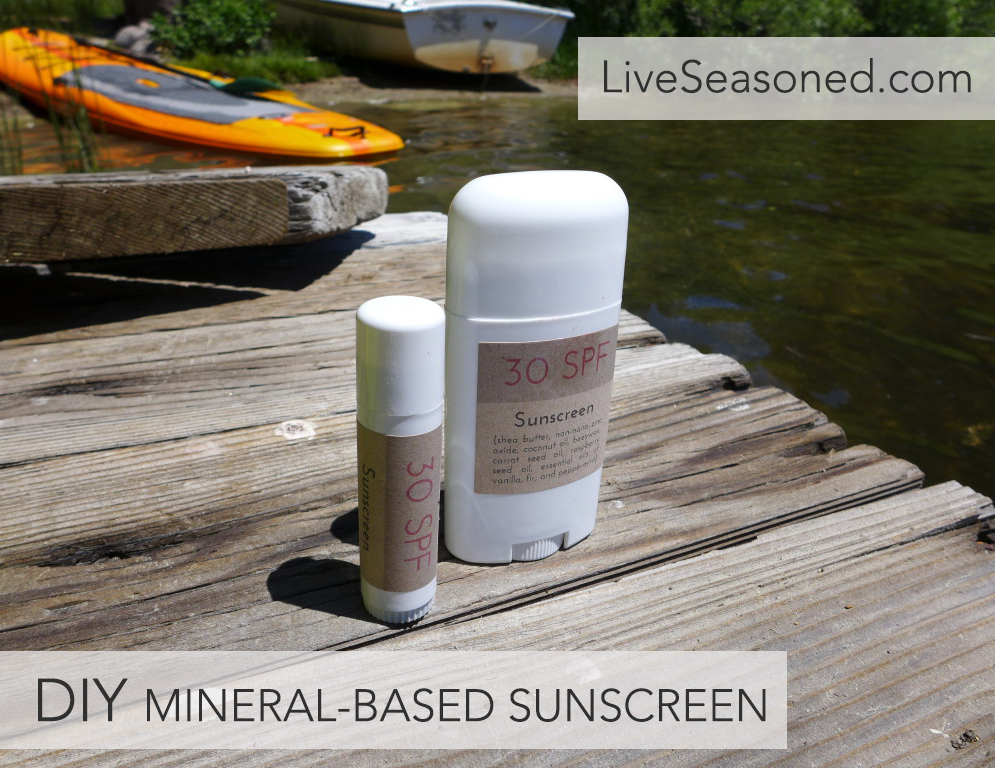
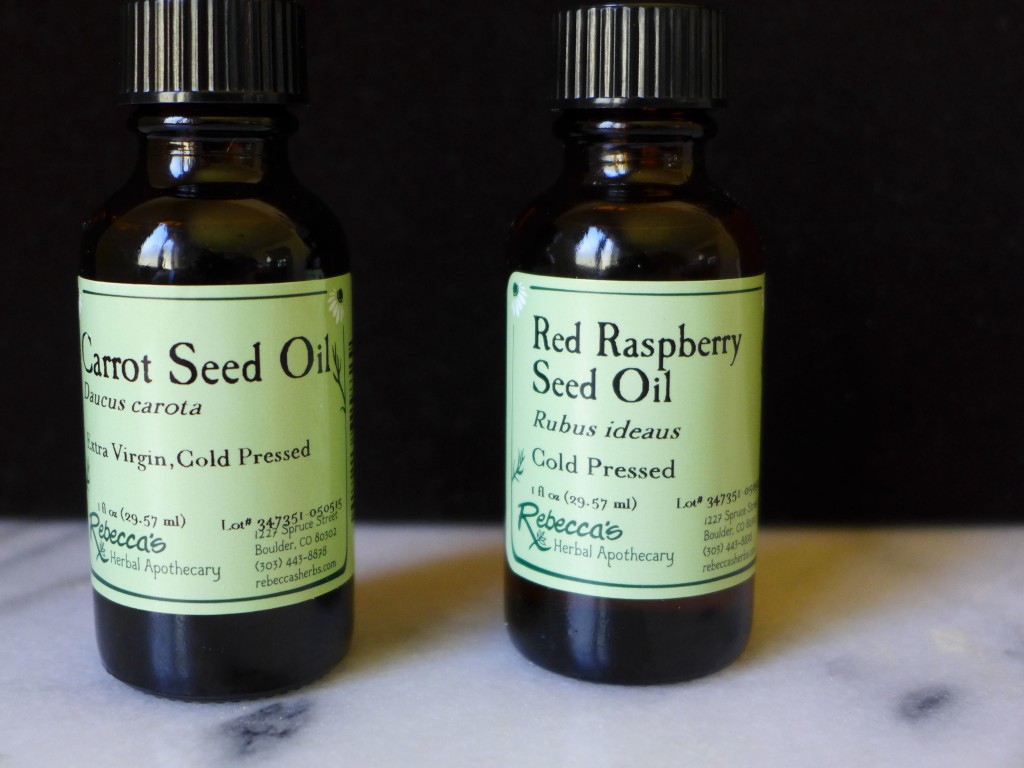
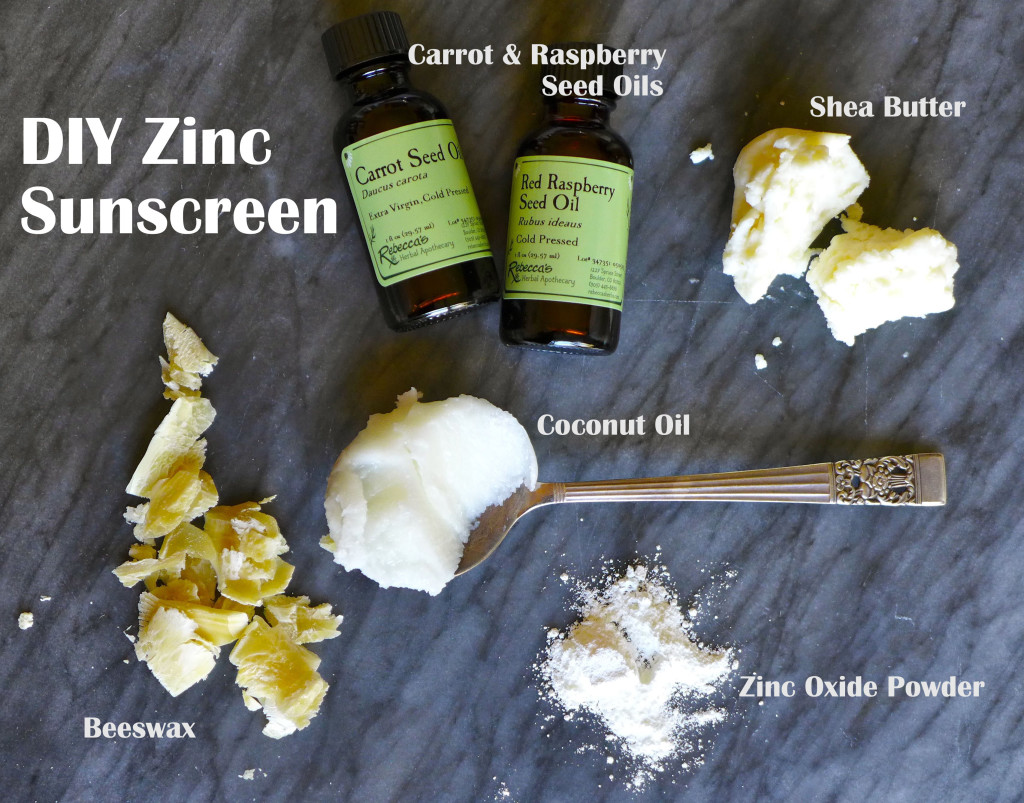
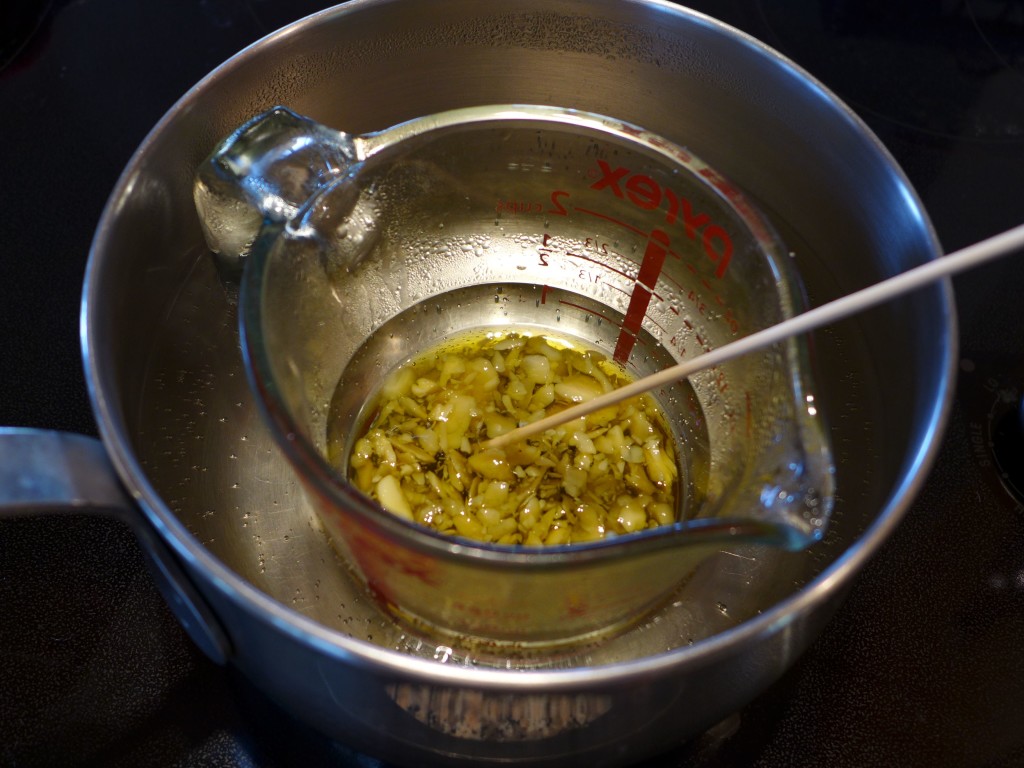
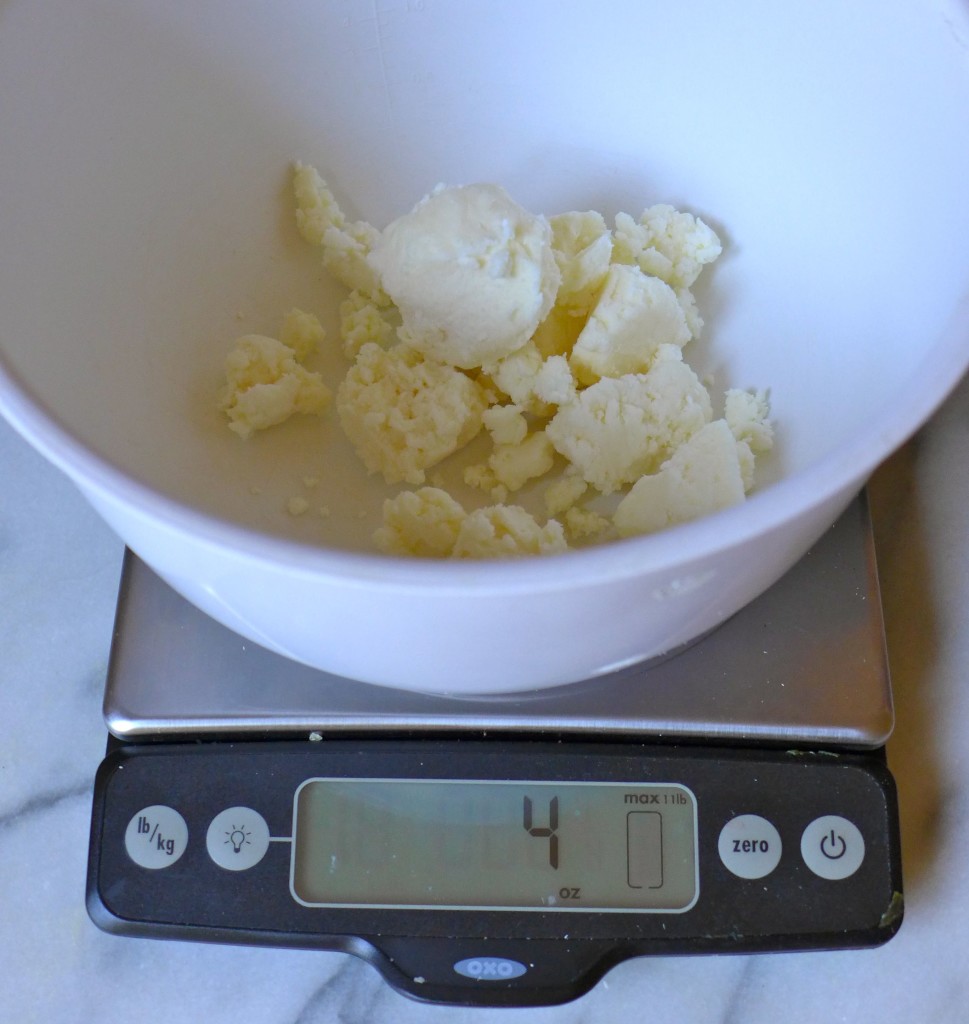
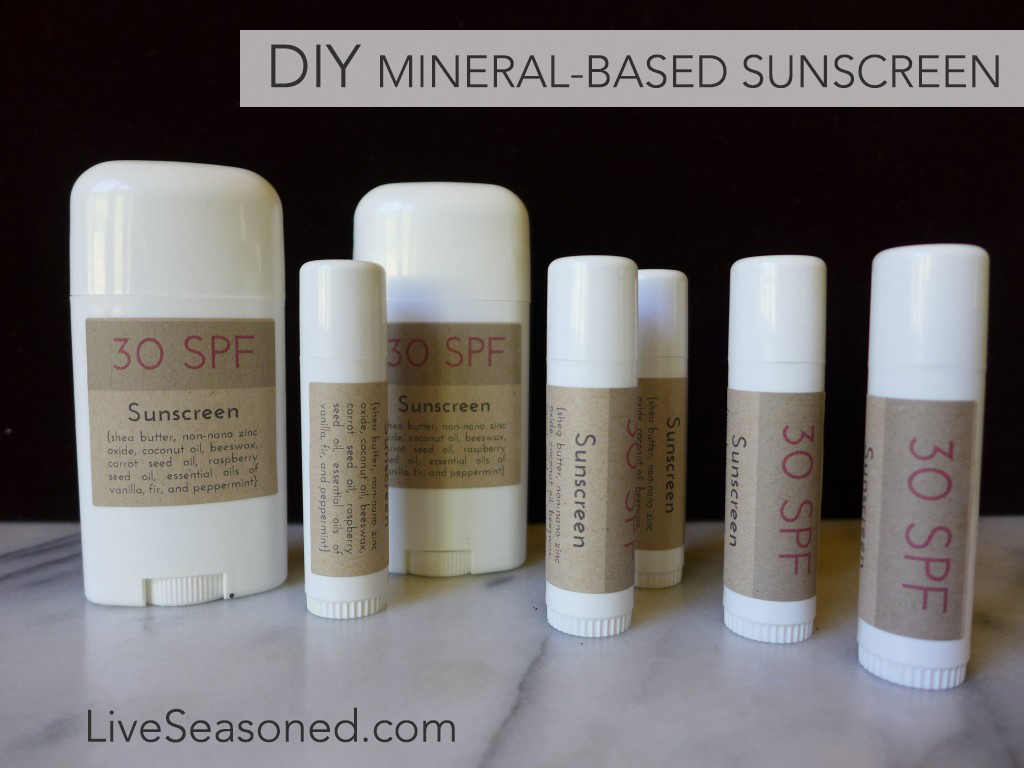
Woah! this is such a cool post! after your (k’s) lovely sister-in-law posted EWG’s horrible ratings for neutrogena sunblock, I have started looking elsewhere for options. I think I might try whipping up one of these potions to try while I wean myself off of chemicalpit that is my current block.
You should! And you can keep it simple and try my suggestion to sub the coconut oil for the carrot raspberry seed oils (if you have trouble getting them)… but also – you have a stick of this with your name on it for the beach this year ;-).
Pingback: DIY Natural Sunscreen – Conceptual Reasoning